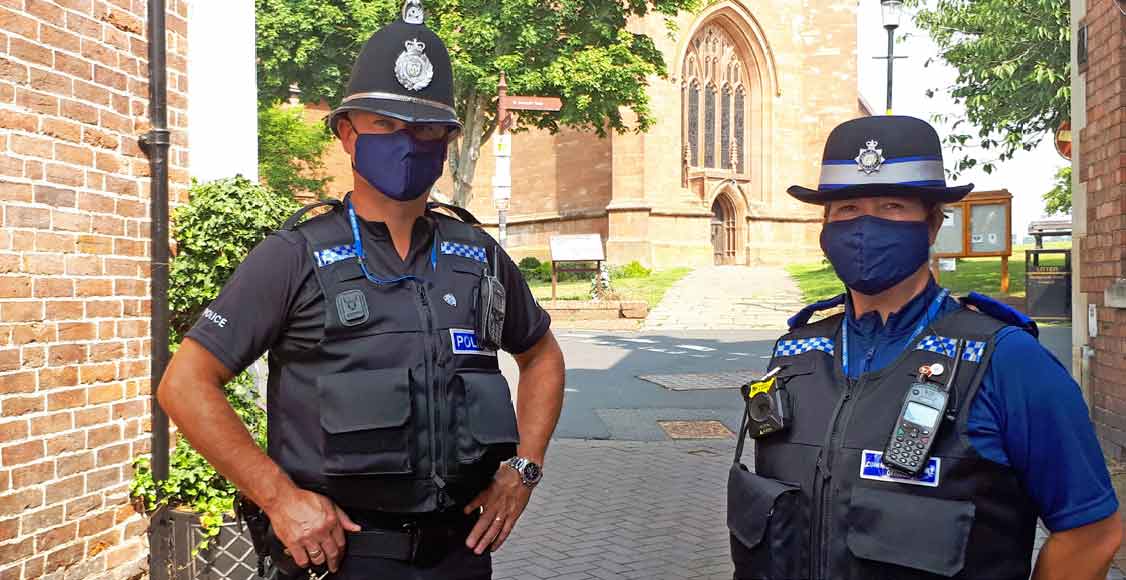The False Story That Shocked Communities
A Facebook post recently went viral, claiming that a young boy, approximately two years old, was found wandering alone at night in either Hereford or King’s Lynn by a police officer named “Deputy Tyler Cooper.” The post included an image of a bruised child and urged users to “flood feeds” to help locate his family.
Shared across large community groups, the story sparked immediate concern, sympathy, and thousands of shares. However, authorities have now confirmed that the incident never happened.

No Record of the Incident, No Officer Named Tyler Cooper
West Mercia Police issued a public statement clarifying that there was no such report in Hereford and that no officer by the name “Tyler Cooper” serves on their force. Likewise, Norfolk Constabulary stated that the incident did not occur in King’s Lynn and noted that their force does not even use the rank of “deputy.”
These clarifications make it clear: the story circulating on Facebook is completely fabricated.

How These Hoaxes Work
These types of posts often begin with highly emotional content—usually involving children, animals, or missing persons. They exploit the natural instinct of users to help and share. However, after gaining viral reach, the post creators often edit the original message, replacing it with:
-
Suspicious links to cashback scams
-
Real estate promotions
-
Cryptocurrency ads
-
Or malware-hosting websites
This bait-and-switch method helps scammers gain visibility without having to pay for ads.
How to Identify a Fake Viral Post
To protect yourself and others, here are a few red flags that often indicate a post is part of a viral hoax:
-
Comments are turned off: This prevents users from pointing out that it’s fake.
-
The same story is posted in multiple unrelated groups.
-
No verifiable news source or police report is linked or cited.
-
Stock images or overly emotional language are used to provoke urgency.
-
Call-to-action phrases like “Please share before they take this down” or “Facebook is hiding this!”
If you encounter one of these, it’s important not to engage. Instead:
-
Report the post to Facebook using the built-in tools.
-
Avoid clicking any links associated with the post.
-
Inform the group admin or moderator if the post appears in a local community group.
The Impact on Real Communities
Fake stories like these don’t just trick individuals—they also flood legitimate community groups, distracting attention from actual missing persons cases or local news. Authorities, moderators, and even families who are truly in distress often have a harder time getting their message across because of hoax clutter.
Meta, Facebook’s parent company, has faced growing criticism for not acting swiftly enough on such posts. Community leaders and digital safety experts have urged the platform to introduce stronger verification mechanisms and automated hoax detection systems.
Stay Safe and Stay Informed
In today’s digital environment, viral does not mean verified. Before sharing anything on social media—especially stories that involve missing children or emergencies—ask these quick questions:
-
Have I seen this story on a verified news website?
-
Is the original poster credible?
-
Are the details vague or oddly formatted?
-
Does a quick search show similar stories from different places?
If the answers raise any doubts, don’t share it.
Final Thoughts
While it’s heartwarming to see people come together online to help others, scammers are now taking advantage of that goodwill. False missing child stories are part of a larger wave of social media manipulation tactics that rely on emotional response to spread.
Protect your feed, protect your community, and always verify before you amplify.
Sources
